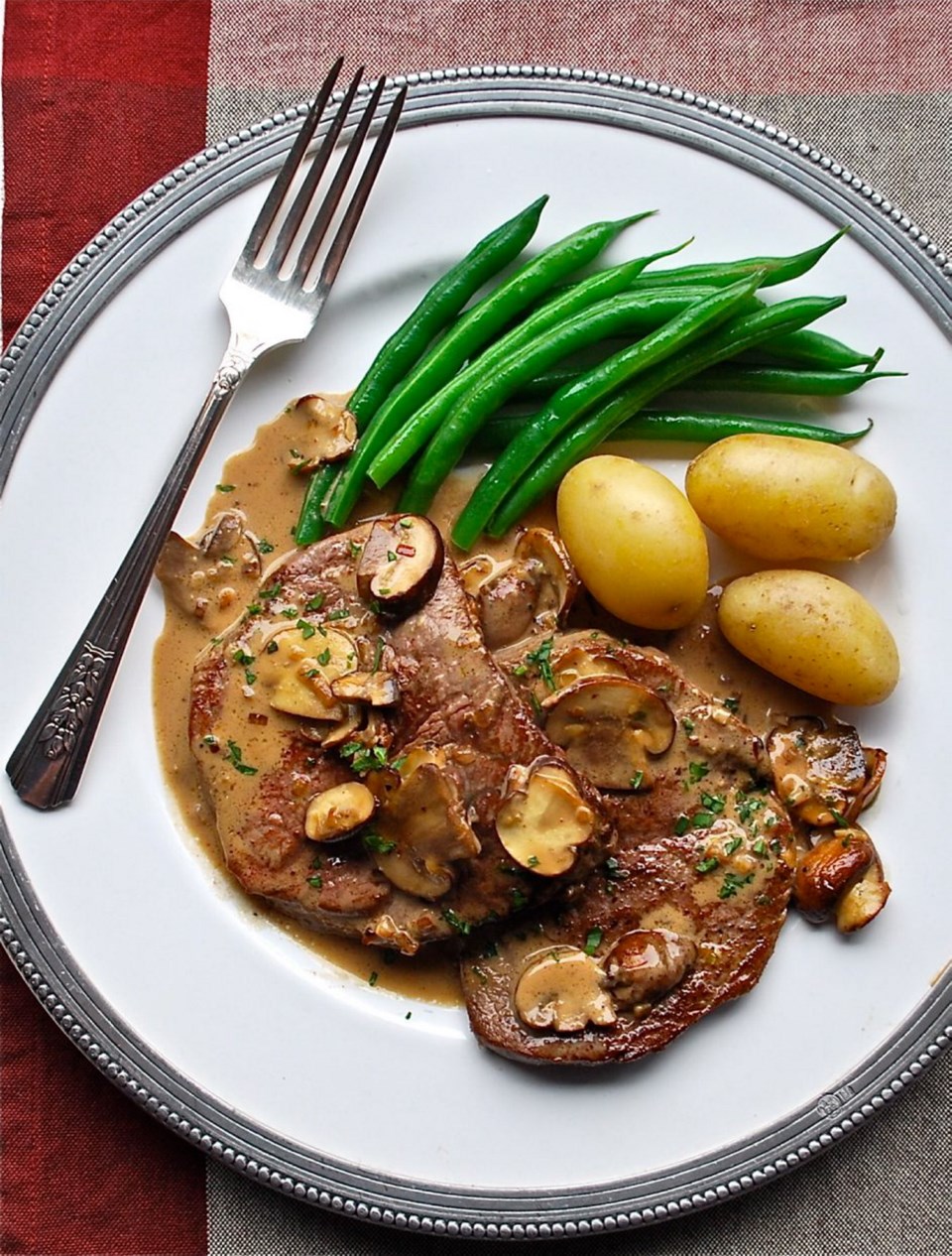When I was a chef’s apprentice in the early 1980s, the hotel I worked in had a fine-dining restaurant. That restaurant, as with others in that era, offered several dishes that were prepared on a rolling cart right in the dining room by service staff.
They included such things as caesar salad and crêpes Suzette. But the ones that garnered the most interest were entrées spiked with alcohol that were ignited tableside, adding flames and drama to the dish before it was served.
One of those entrées that you still see on restaurant menus is steak Diane, a preparation rooted in a much older European dish.
According to the book Rare Bits: Unusual Origins of Popular Recipes, steak Diane evolved from a method for serving venison with a sharp sauce intended to complement the sweet flavour of deer meat. The book says it was named for Diana, Roman goddess of the hunt.
About the middle of the previous century, this method for preparing meat “à la Diana” made its way to North America. Tender beef steaks replaced the venison and Diana was switched to Diane.
The Drake Hotel, the Sherry-Netherland Hotel and the Colony Restaurant in New York City were establishments believed to have first served steak Diane.
Each place had its own way of preparing the dish, and so did the countless other restaurants that also began serving it. Add in modern renditions of steak Diane and it explains why the recipes you find for it can vary quite a bit.
For example, some call for thick steaks, while others ask you to pound and flatten the meat before cooking it. Some recipes only call for cognac or brandy, while others add other types of alcohol, such as red wine or sherry. And the amounts of ingredients used to flavour the sauce, such as Dijon mustard and Worcestershire sauce, differ from recipe to recipe.
My recipe is what I would call the fine-dining restaurant style, where the steaks are flattened before cooking, speeding up the cooking process. That, in turn, enables the busy service person making the steak Diane right in the dining room to do so in a timely fashion.
For my recipe, which serves two, it only takes about 12 minutes in total to sear the steaks, make the sauce, add the steaks to the sauce, then serve the dish. Because it cooks fairly quickly, it’s important to have all ingredients prepped, measured and ready to go before you start cooking it.
Steak Diane for Two
Tender beef steaks, seared and then coated in a decadent sauce, rich with brandy, mustard, cream and reduced stock. Serve the steak Diane with green beans or asparagus and boiled miniature potatoes, mashed potatoes, frites or other potato dish.
Preparation time: 20 minutes
Cooking time:About 12 minutes
Makes: Two servings
1 1/4 cups salt-free beef stock
4 small (about 3 oz./85 gram) beef tenderloin steaks
• sea salt and freshly ground black pepper, to taste
1 Tbsp butter
2 tsp olive oil
1 Tbsp minced shallot
1 small garlic clove, minced
8 small brown (cremini) mushrooms, thinly sliced (about 1/4 lb.)
2 Tbsp brandy
1/4 cup whipping cream
2 tsp Dijon mustard
2 tsp Worcestershire sauce, or to taste
2 tsp chopped fresh parsley
Place stock in a small pot and bring to simmer over medium, medium-high heat. Simmer stock until reduced to 1/4 cup (see Note). Set the reduced stock aside for now (see Eric’s options).
Set steaks on a work surface and cover with a double layer of plastic wrap. Use a kitchen hammer to pound each steak until about 1/4-inch thick (see Eric’s options).
Pat steaks dry with paper towel, then season with salt and pepper.
Place butter and oil in a large skillet set over medium-high heat. When butter is melted and no longer foaming and sizzling, add the steaks to the skillet and cook about one minute per side, until nicely seared, but still rare in the middle. Take pan off the heat and transfer steaks to a plate.
Add shallot and garlic to the skillet, set over medium heat, and cook and stir about 30 seconds. Add the mushrooms and cook and stir them until tender, about three minutes.
When mushrooms are tender, remove pan from heat, add brandy to the pan, tilt the pan slightly away from you and then carefully ignite the brandy with a long match (see Eric’s options).
When brandy is no longer flaming, set pan back over medium heat and add the reduced stock, cream, mustard and Worcestershire sauce. Bring this sauce for the steaks to a simmer, and simmer one minute.
Return the steaks and any juices on the plate to the skillet and heat the steaks through one to two minutes. Divide the steaks between two dinner plates, top with sauce and serve, sprinkled the parsley.
Note: If you reduced the stock to a below 1/4 cup, simply top up with a bit of water until you have 1/4 cup.
Eric’s options: You can reduce the stock a day before needed. Once reduced to 1/4 cup, transfer to a bowl, cool to temperature, cover and refrigerate until needed for the steak. Reducing stock in this way creates a concentrated liquid that, in culinary terms, is called glace de viande.
If you don’t have a kitchen hammer, because the meat is so tender, you could simply use the palm of your hand to firmly press on the meat until it’s about 1/4-inch thick.
If you don’t want to ignite the brandy, after adding it to the pan, simmer and reduce it until almost evaporated, before adding the reduced stock and other ingredients needed for the sauce.
Eric Akis is the author of eight cookbooks. His columns appear in the Times Colonist Life section Wednesday and Sunday.



